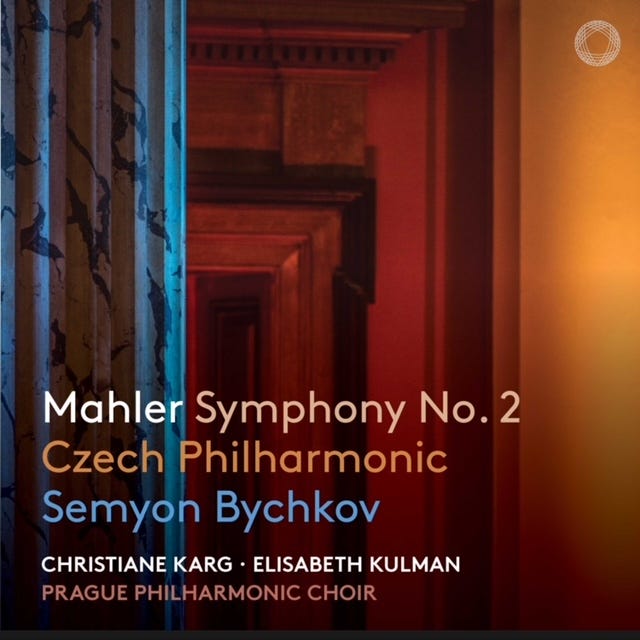Disc Review: From Bohemia's Woods and Fields
Semyon Bychov's Czech Philharmonic Mahler reminds us of the composer's origins
MAHLER: Symphony No 2
Christiane Karg (sop), Elisabeth Kulman (mezzo), Czech Philharmonic, Prague Philharmonic Choir/Semyon Bychkov
Recorded live over three concerts in Prague’s glorious Rudolfinum, this is the third release in Bychkov’s Mahler cycle with the Czech Phil - part of the orchestra’s first complete survey of Mahler since the 1990s. Three decades on - and several music directors later - its woody woodwinds and earthy brass and strings reclaim Mahler as a Bohemian composer, born in Kalište (then Kalischt) in 1860, a Jewish son of the Austrian Empire. The pristine al fresco sound of the Czech players is remarkably apt for this music, because Mahler’s entire output is pervaded with the voices of nature - birdsong, forests, rivers and wide open spaces, the early symphonies replete with self-borrowed reminiscences of his song collection Des Knaben Wunderhorn.
In the Second Symphony, completed in 1894, one of these settings, Urlicht (Primeval), appears as an entire movement, albeit a short one, serving as an introduction to the massive finale - more than 35 minutes at Bychkov’s measured but never ponderous tempi - which is crowned with one of the most glorious choral apotheoses of any symphonic work since Beethoven’s Ninth. It is the journey towards “Resurrection” - Mahler’s setting of words by Goethe’s less gifted contemporary Friedrich Gottlieb Klopstock, who nevertheless inspired the composer to his most uplifting choral writing. The Prague Philharmonic Choir (under Lukaš Vasilek) develop this final crescendo from a barely audible pianississimo to the most magnificent fortississimo, brilliantly captured on this single CD by the Pentatone engineers.
Bychkov prepares for Mahler’s climactic resolution with an outstanding grasp of the symphony’s dramatic structure and pacing. The opening movement, originally titled Totenfeier (Ceremony of the Dead), has an inexorable, yet never quite funereal tread (for Mahler, death was a lifelong trauma), with room for reflection on the beauties of nature. This is further emphasised in the lilting Andante with its folksy melodies and the so-called Scherzo, with recycled material from his song ‘St Anthony’s Sermon to the Fishes’, whose Ländler-like rhythm is handled with a deliciously rustic rubato.
The two soloists are Christiane Karg, leading the chorus in the Resurrection finale, and Elisabeth Kulman, gravely beautiful in Urlicht and the crucial passage ‘O Glaube’ (O Believe). For Bychkov these lines, which Mahler added to Klopstock’s text, are central to the composer’s sometimes conflicted, occasionally pantheistic faith.
I await with impatience Pentatone’s imminent issue of Bychkov’s recording of the First Symphony and, next year, the Third. The cycle is shaping up to be one of the freshest, most absorbing Mahler recordings of the decade.





A cycle definitely to be explored, it seems, based on Hugh's (as ever) perceptive review. I am deeply attached to my LPO/Tennstedt cycle from EMI but maybe it is time to re-visit these extraordinary works and the presence of Christiane Karg makes it even more enticing